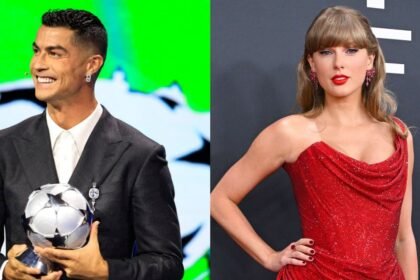The French billionaire Bernard Arnault, the creator of LVMH (Moët Hennessy Louis Vuitton), is not only the wealthiest person in fashion but also the mastermind behind a worldwide luxury conglomerate that includes over 75 esteemed brands. As Nigeria’s fashion sector continues to grow internationally, Arnault’s quick ascent provides a master class in branding, commerce, and cultural significance that may help lead the nation’s leading design firms to worldwide supremacy.
From Engineer to Empire Builder
Arnault was born in 1949 in the northern French city of Roubaix and grew up in an industrial family. He joined his father’s construction company, Ferret-Savinel, in 1971 after completing his studies at École Polytechnique, France’s top engineering school. Convincing his father to invest into real estate was his first calculated move there, hinting at his talent for finding value in unexpected areas.
When Arnault was a young real estate developer in 1984, he learned that the French government was going to select a successor for the Christian Dior-owned textile and retail group Boussac Saint-Frères.
The Dior Move That Changed Luxury Forever
In 1984, Bernard Arnault made his move into the fashion industry by purchasing the faltering textile company Boussac Saint-Frères, mostly for the Christian Dior brand. Antoine Bernheim, a senior partner at Lazard Frères, assisted Arnault in purchasing the luxury goods business Financière Agache. After winning the bidding war for Boussac Saint-Frères, he became the CEO of Financière Agache, thus assuming control of the company.
Arnault earned the moniker “The Terminator” because he fired 9,000 employees in two years after purchasing Boussac. Boussac kept the Dior and Le Bon Marché department store, which he utilized as the foundation of his future luxury empire, while selling off the majority of his holdings. The business turned a profit once more in 1987, with $112 million in profits on $1.9 billion in revenue.
As stated by Investopedia, He was seen by his admirers as a visionary businessman who was reviving French industry. He was viewed by his detractors as “the wolf in cashmere,” bringing “Anglo-Saxon ruthlessness to the genteel world of 1980s French business”; no more than “a corporate raider dismantling centuries of tradition.”
How Bernard Arnault Took Over LVMH
Arnault masterminded one of the most spectacular takeovers in French corporate history in the late 1980s. In 1987, he co-founded LVMH with Henry Racamier, president of Louis Vuitton, and Alain Chevalier, CEO of Moët Hennessy. He gained control of LVMH through strategic acquisitions and shareholder machinations, and by 1989, he served as both chairman and CEO. With assets in fashion, cosmetics, jewelry, wines and spirits, hotels, and other industries, Arnault transformed LVMH into the greatest luxury goods corporation in the world over the course of the following three decades. Famous brands including Dior, Fendi, Bulgari, Celine, TAG Heuer, and most recently, Tiffany & Co., which LVMH purchased for $15.8 billion in 2021; the biggest luxury transaction in history, are part of his portfolio.
The Business of Branding
Arnault stands out for his unwavering dedication to brand identity. Arnault is a long-term thinker, unlike many CEOs who focus on quarterly earnings. He respects brand heritage, supports creative directors, and is aware of the emotional psychology of luxury. A Paris fashion analyst said, “He doesn’t sell products; he sells aspiration,” “Arnault knows how to make people feel like they’re buying into a story, a legacy.”
Succession and the Future of LVMH
Forbes estimates that he has a net worth of $143.3 billion. Arnault, who is currently in his 70s, has started getting ready for the next phase. All five of his children are key executives at LVMH brands. The appointment of Delphine Arnault, his eldest daughter, as CEO of Christian Dior Couture in 2023 was generally interpreted as a hint of succession.
What Nigerian Fashion Can Learn
Industry experts believe it’s time to go beyond runway events and celebrity endorsements as Nigeria’s fashion ecosystem develops international traction, supported by labels like Orange Culture, Kenneth Ize, and Lisa Folawiyo. The talent is in Nigeria. Particularly from names like Yomi Casual, Veekee James, Toyin Lawani, Deola Sagoe, Folake Coker, and Seyi Vodi. We now require industry consolidation, size, and brand discipline.
Key Strategies for Building African Fashion Powerhouses
Strategic Alliances: Nigerian designers may profit from joint platforms for production, exporting, and funding, much like LVMH is a collection of independent brands.
Heritage as Luxury: Cultural treasures include indigenous fabrics such as Aso Oke, Adire, and Ankara. They have the potential to become Africa’s Dior or Fendi with their global storyline and high-end branding.
Quality Over Quantity: Arnault taught the business that exclusivity sells, thus quality is more important than quantity. Nigerian companies should avoid oversaturation and embrace quality.
The Case for a Nigerian Luxury Fashion Empire
As of 2025, there will be more than 1.5 billion people living in Africa, according to Worldometer. Given the growing middle class’s need for culture and identity, the time is right for an African luxury home to appear. Nigeria, which is home to Afrobeats, Nollywood, and a thriving young market, is said by some to have all the makings of LVMH on the continent. But in order to get there, we must teach fashion executives; not just designers; to build infrastructure, and think internationally.
Conclusion: From “Lapo Baby” to Luxury Boss
Some will claim that Bernard Arnault was a “Nepo Baby,” as affluent children in Nigeria are known to be called; this may be the reason why the majority of the nation’s fashion talent don’t think they could ever achieve that pinnacle. However, the billionaire’s journey from engineer to fashion tycoon is not only a tale of commercial triumph; it serves as a model for innovative business practices. His story is unquestionably proof that luxury is not just about beauty; it’s also about value, strategy, and timeless appeal, and even the most humble beginnings can produce that.
This is true for Nigerian fashion talents whether we were born with the proverbial silver spoon in our mouths or are a “Lapo Baby,” as less fortunate children are humorously called.
Arnault’s history offers a potent model for Nigeria as it seeks to establish itself on the international fashion scene. It’s possible that the upcoming generation of Nigerian fashion leaders could be the ones to redefine luxury in a time when Lagos would be able to compete with Paris and Milan.







